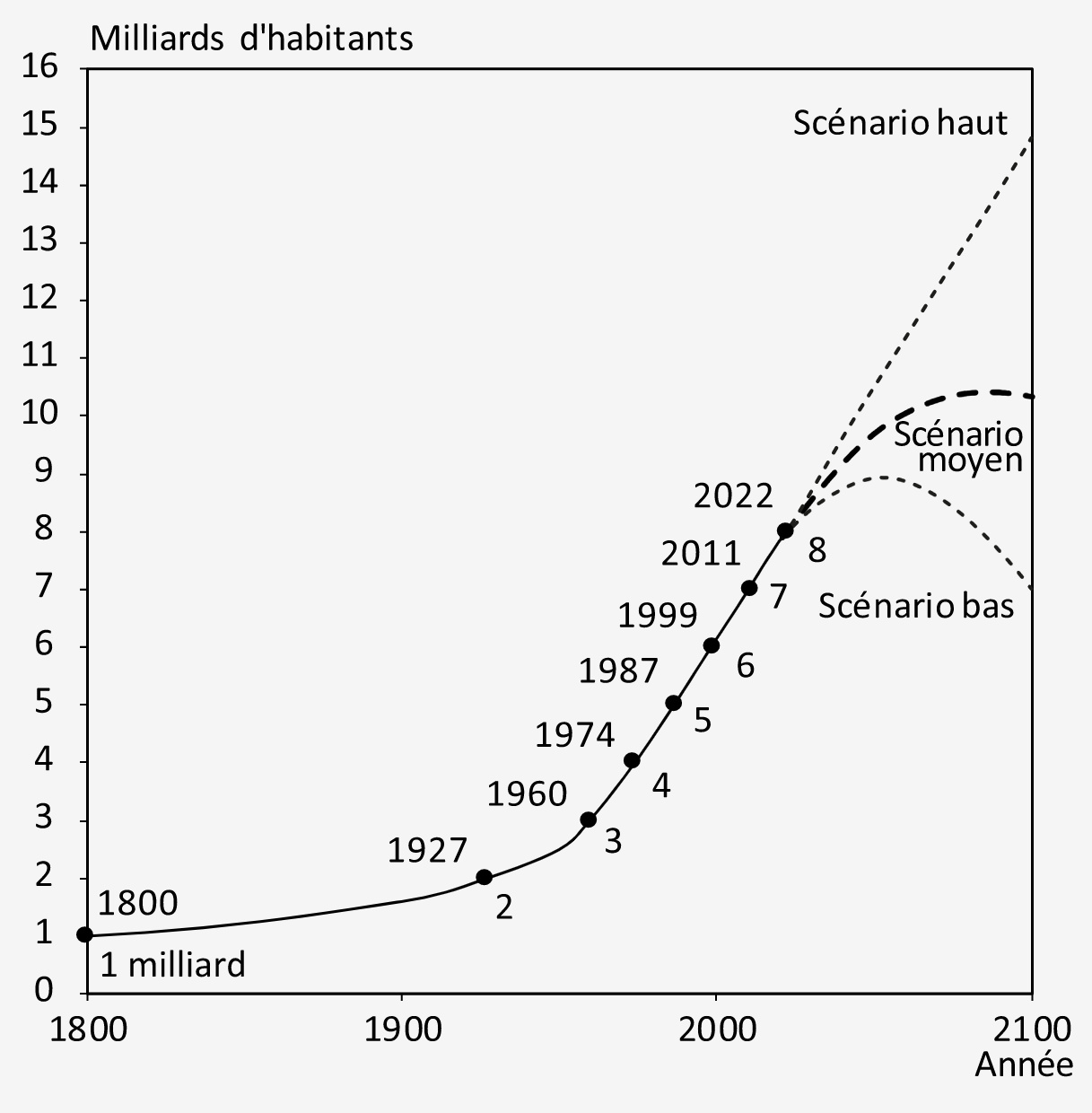
Description of the image: Gilles Pison, Population & Societies, No. 604, INED, October 2022. Data source: United Nations. World Population Prospects 2022
Many organizations publish forecasts regarding population growth for 237 countries or regions based on birth and death rates, fertility indices, and many other key demographic indicators.
These projections are revised from time to time, based on updated information and improved modeling techniques.
The global population reached 8 billion in November 2022, although civil registration or survey statistics are not yet available for 2022 (1 billion more inhabitants in 12 years).
Simulations predict a sharp decline in the global population, but no organization knows when or how this will occur.
However, humanity continues to use increasing amounts of natural resources, and the pace does not slow down. The pressure on the Earth's system (environment, biodiversity, ecosystems, water, and other resources) has become unsustainable.
A decline in fertility is underway in all countries, especially in developing countries. The global population is expected to stabilize by 2050.
Can we wait a few more decades?
The number of inhabitants on the planet is the result of immense and rapid progress achieved by humanity over the last two centuries.
In 1800, there was one billion inhabitants on Earth, and since then, the global population has increased eightfold.
All energies (solar, wind, fossil, nuclear, hydro, wood, coal, etc.) developed since then have continuously added up without replacing each other. The amount of energy required by humanity keeps increasing.
At this rate, by 2050 humanity will consume an additional 40 terawatts of energy, which will require approximately 40,000 more power plants.
The global population is still growing too rapidly, raising concerns about overpopulation. However, the birth rate worldwide continues to decline (2.5 in 2011, 2.3 in 2022). Demographic projections indicate continued growth for a few more decades, but at a decelerating rate year by year.
The global population is expected to increase by about 2 billion more people before reaching a peak.
N.B.:
1 billion more inhabitants every 11 years. The 6 billion mark was crossed in 1999, the 7 billion mark in 2011, and the 8 billion mark in 2022. Details of the data on the INED website
| Population (in millions) | Children per woman | Percent growth rate | |
| WORLD | 6 988 | 2.51 | 1.1 |
| AFRICA | 1 056 | 4.38 | 2.2 |
| LATIN AMERICA | 594 | 2.14 | 1.0 |
| NORTH AMERICA | 354 | 2.01 | 0.9 |
| ASIA | 4 212 | 2.29 | 1.1 |
| EUROPE | 733 | 1.52 | 0.1 |
| OCEANIA | 36 | 2.41 | 1.3 |
| Population (in millions) | Children per woman | Percent growth rate | |
| WORLD | 7 975 | 2.3 | 0.9 |
| AFRICA | 1 427 | 4.2 | 2.4 |
| LATIN AMERICA | 660 | 1.8 | 0.7 |
| NORTH AMERICA | 377 | 1.6 | 0.2 |
| ASIA | 4 723 | 1.9 | 0.6 |
| EUROPE | 744 | 1.5 | -0.4 |
| OCEANIA | 45 | 2.1 | 0.8 |